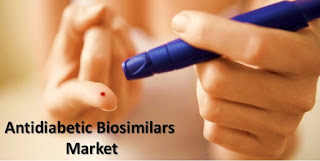Drug discovery informatics and development is an extremely complex process that involves generation of large volumes of data. At present the market for drug discovery informatics is largely unmet. The existing approaches to gather information from various sources have been dealt with in some cases where the data types are very least well-defined or largely homogeneous. Nonetheless, the world on the verge of a new age of drug discovery informatics, the methods and approaches in which are dealing with gathering information from data and knowledge from information are experiencing a paradigm shift. The demands of this industry are well defined: huge amounts of data are produced using various innovative technologies and the restraint is searching, integrating, and accessing this data.
Get PDF Research Brochure for more Professional and Technical Insights: https://www.coherentmarketinsights.com/insight/request-sample/224
Additionally, the inclination is to make important development decisions in the early life cycle of the discovery process. It has become crucial to take care of these issues with the vast amount of data available from ongoing projects and also from early efforts of drug development. The future of drug discovery informatics will be the assimilation of distributed and heterogeneous data. Domain specific data mining and data integration such as genomic and chemical data will continue to offer significant opportunities for drug discovery informatics. Procurement and management of graphical, textual and undefined data are some of the challenges in this field. However, these will become a vital part of data searching as well as building knowledge and information-bases. These factors will eventually lead to the growth of the data discovery informatics market during the forecast period.
Increasing chronic illnesses such as cancer, cardiovascular diseases (CVD), and diabetes mellitus is the chief concern for healthcare professionals and government organizations around the globe. The U.S. government in association with President’s Council of Advisors on Science and Technology (PCAST) has taken initiatives intended to improve financial stimulus to induce modernization in the pharmaceutical industry, which will drive the overall market for drug discovery informatics. Furthermore, collaborations amongst pharmaceutical companies have given rise to infusion of money and sharing of technologies amongst them, which has enabled these companies to develop local as well as global products.
Ask for Discount before buying the Report@ https://www.coherentmarketinsights.com/insight/request-discount/224
Drug Discovery Informatics market Taxonomy
On the basis of mode, the global drug discovery informatics market is classified into:
- In-House Informatics
- Outsourced Informatics
On the basis of service segment, the global market is classified into:
- Sequence Analysis Platforms
- Molecular Modelling
- Docking
- Clinical Trial Data Management
- Others
On the basis of product segment, the global market is classified into:
- Discovery Informatics
- Identification & Validation Informatics Assay Development Informatics
- Lead Generation Informatics
- Development Informatics
- Lead Optimization
- FHD Preparation
- Phase IA Informatics
- Phase IB/2 Informatics
Advent of technology and the increasing number of clinical trials will drive the overall drug discovery informatics market
With the advent of technology, innovative cloud-based and analytics technologies, storage and analysis of large amount of data is now possible at a lower cost. For example, Infosys popularized a cloud-based application to accelerate the management of data services for clinical trials. This in turn is likely to drive the whole drug design procedure. Infosys has been working in partnership with various clinical trial organizations and pharmaceutical companies to master the application and to provide easy access and management of data.
The facilities that are offered can be outsourced to other organizations or can be used in-house via licensed solutions. In-house informatics segment holds a significant market share in the present scenario owing to the presence of information technology platforms in most of the companies. However, outsourced informatics segment is likely to grow at a considerable pace during the forecast period as the key industry players are opting for collaborations with the IT providers to increase their access to the tools and databases for clinical drug discovery.
Browse Global Strategic Business Report: https://www.coherentmarketinsights.com/ongoing-insight/drug-discovery-informatics-market-224
Europe accounted for the major market share in the drug discovery informatics market. Some of the major factors for the same are rise in the clinical discovery ventures as well as various activities carried out by research institutes, universities, and companies. Nonetheless, Asia Pacific is predicted to grow at a significant pace during the forecast period owing to high prospect of drug nanotechnology sector in this region as well as advancements in research software.
Some of the key players operating in the global drug discovery informatics market are Albany Molecular Research, GVK Biosciences, Infosys, Certara, ChemAxon, Jubilant Biosys, DiscoverX, Novo Informatics, Charles River Laboratories, Boehringer Ingelheim GmbH, and Selvita.
About Coherent Market Insights:
Coherent Market Insights is a prominent market research and consulting firm offering action-ready syndicated research reports, custom market analysis, consulting services, and competitive analysis through various recommendations related to emerging market trends, technologies, and potential absolute dollar opportunity.






